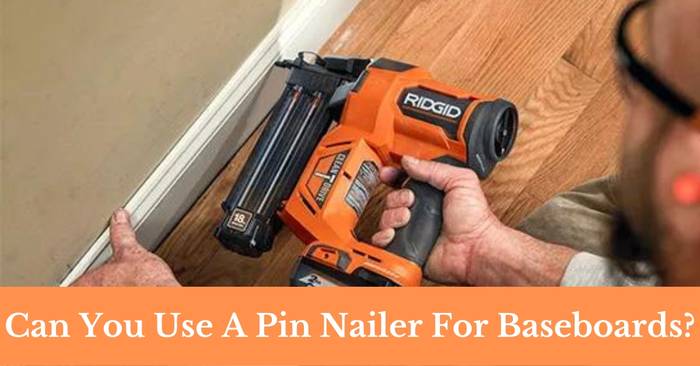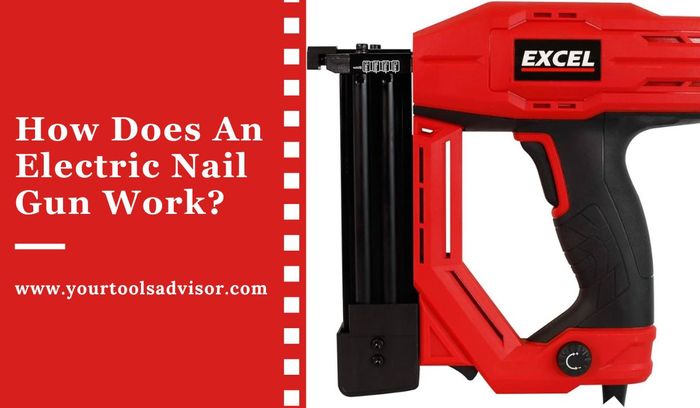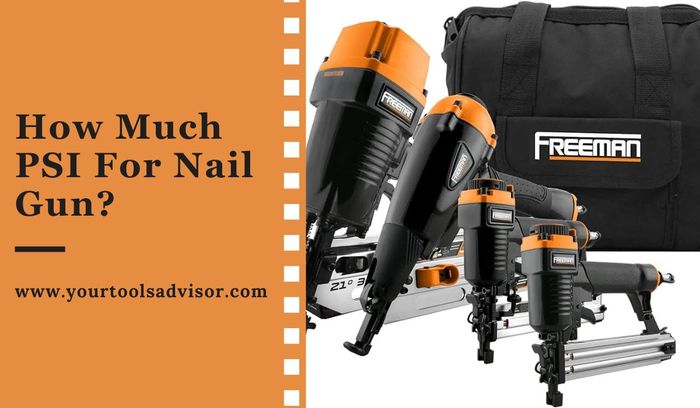Baseboards are a popular addition to many homes, serving both functional and aesthetic purposes. They are installed along the bottom of walls and help to protect the wall from damage. At the same time, pin nailers are lightweight and compact tools that use small pins to secure trim and moldings in place.
So, one question that may pop up in your mind right now is – “can you use a pin nailer for baseboards?”
Well, yes, a pin nailer can be used for installing baseboards. It is a suitable tool for attaching small trim and moldings, providing a clean and secure finish.
Keep in mind that using a pin nailer for baseboards offers several advantages. Firstly, it creates a clean and professional-looking finish, as the pins leave minimal, almost invisible holes. Secondly, it allows for quick and efficient installation, reducing the time and effort required.
Lastly, since baseboards are typically small and lightweight, a pin nailer’s smaller pins are sufficient to provide adequate support.
In today’s post, I am going to share a detailed discussion on whether you can use a pin nailer for baseboards or not.
So, without any further ado, let’s dive right now…
What Is A Pin Nailer?
A pin nailer is a powerful tool used for various woodworking projects, including attaching baseboards. It is designed to drive small, headless nails called pins into the work surface. The function of a pin nailer is to provide secure and discreet fastening, leaving behind almost no visible holes.
This makes it ideal for delicate trim work, such as baseboards, where you want a seamless finish. The process of using a pin nailer is relatively simple. First, load the pins into the magazine of the nailer. Then, align the nailer with the workpiece and press the trigger to release the pin.
The pin is driven into the material with enough force to securely hold it, without splitting or damaging the wood.
Overall, a pin nailer is a valuable tool for achieving professional-looking results with baseboards and other woodworking projects.
Benefits And Drawbacks Of Using A Pin Nailer For Baseboards
Using a pin nailer for baseboards offers numerous advantages. Firstly, it provides a seamless and professional finish. Additionally, the pin nailer’s smaller nails leave minimal visible holes, ensuring a clean look. Moreover, the pin nailer is lightweight and easy to maneuver, reducing user fatigue.
Another benefit is the speed at which baseboards can be installed, saving time and effort. However, there are some potential drawbacks to consider. For one, the pin nails may not provide enough strength for heavier baseboards. Additionally, pin nails can easily break under stress, compromising the stability of the installation.
Lastly, when compared to other nail guns, pin nailers have a smaller holding capacity, requiring frequent reloading.
Moreover, while a pin nailer can be a convenient and efficient choice for baseboard installation, it is important to consider its limitations and suitability for the specific project.
Tips For Using A Pin Nailer On Baseboards
Using a pin nailer for baseboards can be a convenient and efficient way to secure them in place. However, it is important to follow safety precautions to avoid any accidents. Always wear protective eyewear, gloves, and earplugs when operating a pin nailer.
Additionally, make sure to keep your fingers away from the nailer’s tip to prevent injuries. When securing baseboards, use the proper technique by positioning the nailer at a slight angle and applying gentle pressure. This will ensure that the nails are securely fastened without damaging the baseboard material.
It is also crucial to choose the right pin size and length for different baseboard materials. Thinner or softer materials may require shorter pins, while thicker or harder materials may need longer pins for a secure hold. By following these tips and techniques, you can confidently use a pin nailer for baseboards.
Mistakes To Avoid When Using A Pin Nailer For Baseboards
Using a pin nailer for baseboards can be convenient, but it’s important to avoid common mistakes. Incorrectly angling or setting the pin depth can lead to unsightly results. Another mistake to avoid is using the wrong pin size or length, as this can result in instability and poor adhesion.
It’s crucial to properly secure the baseboards by ensuring they are firmly attached to the wall or trim. Neglecting this step can lead to loose or wobbly baseboards over time. Remember to take your time and be precise when using a pin nailer for baseboards to achieve a professional and durable finish.
FAQs About Using A Pin Nailer For Baseboards
Can I Use A Pin Nailer For Trim?
Yes, you can use a pin nailer for trim. Pin nailers are a popular choice for trim work due to their small, thin nails that leave minimal marks on the material. They are ideal for attaching delicate trim pieces, such as crown molding or baseboards, without causing any splitting or damage.
Pin nailers are also preferred for smaller projects where larger nails might be too visible. The nails used by pin nailers are thin and can range in length from 1/2 inch to 1-3/8 inches, depending on the thickness of the trim and the depth of penetration required.
What Is The Difference Between A Brad Nailer And A Pin Nailer For Baseboards?
A brad nailer and a pin nailer both are used for baseboards, but they have some differences. The main difference is the size of nails they use. A brad nailer uses larger brad nails, which are thicker and have a bigger head.
On the other hand, a pin nailer uses smaller pin nails, which are thinner and have a smaller head. Another difference is the holding power of the nails.
Brad nails provide more holding power due to their larger size, making them suitable for attaching baseboards securely. Pin nails, on the other hand, provide less holding power and are better for delicate or lightweight materials where you don’t want the nail to be visible.
So, choose the nailer based on the thickness and holding power you require for your baseboard installation.
What Can A Pin Nailer Be Used For?
A pin nailer is a versatile tool used for precision nailing in woodworking projects. It can be used to secure delicate or small pieces of wood without leaving significant marks or splitting the material. This nailer is commonly employed in tasks such as attaching trim pieces, moldings, and decorative elements.
It is especially useful for projects that require a fine finish, like furniture making or cabinetry assembly. With its small and slender nails, a pin nailer can create a tidy and almost invisible fastening solution. Its compact size allows for access to tight spaces, making it perfect for intricate and detailed work.
Whether you are a professional woodworker or a diy enthusiast, a pin nailer is a handy tool to have in your arsenal for precise and efficient nailing tasks.
What Kind Of Nailer Do You Use For Baseboards?
A brad nailer or finish nailer is commonly used for baseboards. These nailers provide the necessary power and precision to attach baseboards securely to walls or floors. Brad nailers typically use 16-gauge nails, which are thinner and leave smaller holes.
Finish nailers use 15 or 16-gauge nails, offering a stronger hold. Both types are suitable for baseboard installation, but the choice depends on personal preference and the specific requirements of the project. Make sure to select the appropriate nail length for the baseboard thickness.
By using a nailer designed specifically for baseboards, you can achieve professional-looking results efficiently.
Conclusion
Using a pin nailer for baseboards can be a convenient and efficient option. It allows for precise and secure installation, eliminating the need for using traditional methods like hammering or drilling. The small size of pin nails ensures minimal damage to the baseboard surface, resulting in a clean and professional finish.
Furthermore, pin nailers are lightweight and easy to maneuver, making them suitable for both professionals and diy enthusiasts. However, it is essential to choose the right type of pin nailer and nail size for your specific baseboard material to ensure optimal results.
Additionally, always follow safety guidelines and wear protective gear when using power tools. With the right approach, a pin nailer can be a valuable tool in your baseboard installation projects, saving you time and effort while achieving a high-quality outcome.





Leave a Reply